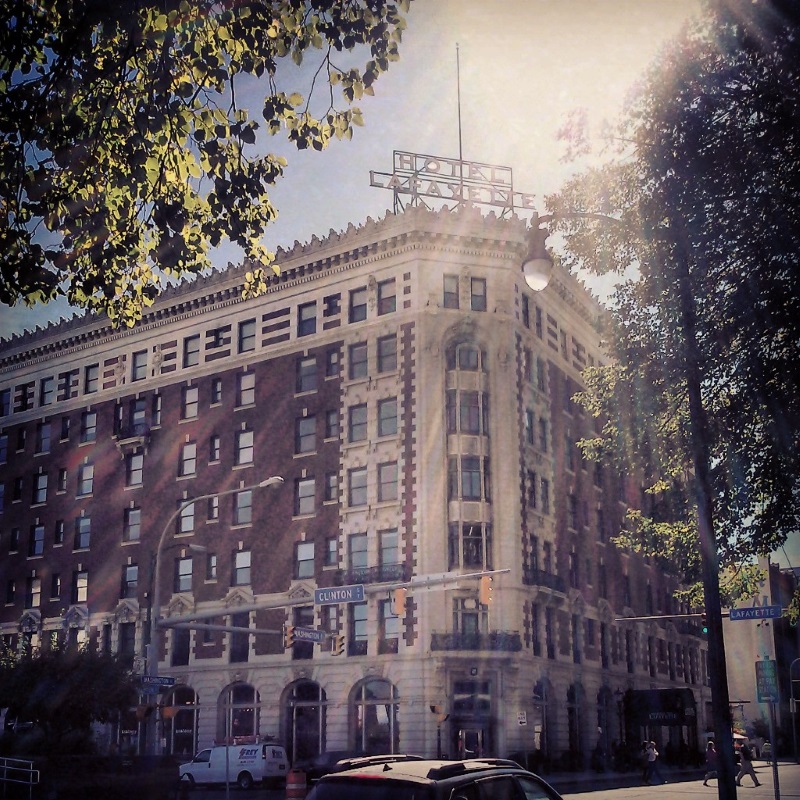Louise Blanchard Bethune has had a major impact on my life as a woman in architecture. Considered the first female architect in America, Blanchard Bethune demonstrated that it was not only possible for a woman to design buildings, she showed the world that a woman could design great, useful buildings as well as any man.
Early Education
Jennie Louise Blanchard was born in 1856 in Waterloo, New York, near the cradle of the women’s rights movement, Seneca Falls, where Elizabeth Cady Stanton, Lucretia Mott and other notable feminists had held the first women’s rights convention in the United States in 1848.
Louise’s father, Dalson Blanchard, was a math teacher and educated her at home until the family moved to Buffalo, New York, sometime in her early teens.
As a young woman, Louise dreamed of attending Cornell’s newly established architecture school, but it didn’t accept women. Instead, she studied and traveled, and, in 1876, became a draftsman in the offices of Buffalo architects Richard A. Waite and F.W. Caulkins, where she worked and learned her trade for five years.
 First Female Architect in the U.S.
First Female Architect in the U.S.
In 1881, Louise married fellow architect Robert A. Bethune and made history by opening her own architecture firm with him, becoming the first woman in the country known to be working as a professional architect. In 1890, architect William R. Fuchs joined the firm, which became Bethune, Bethune & Fuchs and rose to prominence in Buffalo and western New York.
Blanchard Bethune forged a path for women in architecture not only through her design work, but also by making professional connections and becoming involved in the industry’s leading organizations. She became the first woman to join a professional architectural association, with her election to the Western Association of Architects in 1885, followed by membership in the American Institute of Architects (AIA) in 1888 – she also founded the Buffalo chapter – and AIA fellowship in 1889.
She authored several articles on women in architecture, published in journals like American Architect and Building News.
Blanchard Bethune was evidently a force to be reckoned with. A 1986 article in Buffalo Spree notes that architect and Bethune scholar Adriana Barbasch believed Blanchard Bethune was the dominant partner in the Bethune, Bethune & Fuchs firm. According to an article from the University of Illinois, Blanchard Bethune refused to compete for a $1,000 prize to design the Woman’s Building at 1893 World’s Columbian Exposition in Chicago because men who designed for the exhibition were paid $10,000. She commented that women’s emancipation depended upon “equal pay for equal service.”
Significant Work
Blanchard Bethune evidently preferred to work on commercial buildings and is quoted as calling residential buildings “the most pottering and worst-paid work an architect ever does,” defying expectations that a woman architect would naturally gravitate toward the “woman’s realm” of home design.
She was the primary architect for the firm’s commission to build Buffalo’s historic Hotel Lafayette, a French Renaissance style building completed in 1904 with 225 guest rooms, each of which featured hot running water and a telephone, relative novelties at the time. The building earned a place on the National Register of Historic Places in 2010.
Blanchard Bethune designed numerous public schools in Buffalo – her work was popular and utilitarian – as well as Lockport High School in Lockport, New York.
The firm’s design for Buffalo music store Denton, Cottier & Daniels was among the first in the country to use a steel frame and poured concrete slabs.
The late-Gothic Sibley and Holmwood Candy Factory and Witkop and Holmes Headquarters in Buffalo, designed in 1896, still stands today and was listed on the National Register of Historic Places in 2014.
Other significant designs include the 74th Regiment Armory in Buffalo, the Iroquois Door Plant Company warehouse, and the Buffalo Weaving Company building.
Lasting Legacy
Bethune died young, at age 59 in 1915, but she left a lasting legacy. Her commitment to forging a path for women in the architecture industry, along with her designs, completed buildings and written work, made it possible for architects like me to have vibrant careers in what is still a male-dominated industry.
In 1970, The University of Buffalo renamed the former Buffalo Meter Company building, which it had purchased to house its Department of Art, Bethune Hall in honor of America’s first female architect.
This post first appeared in 2019.


